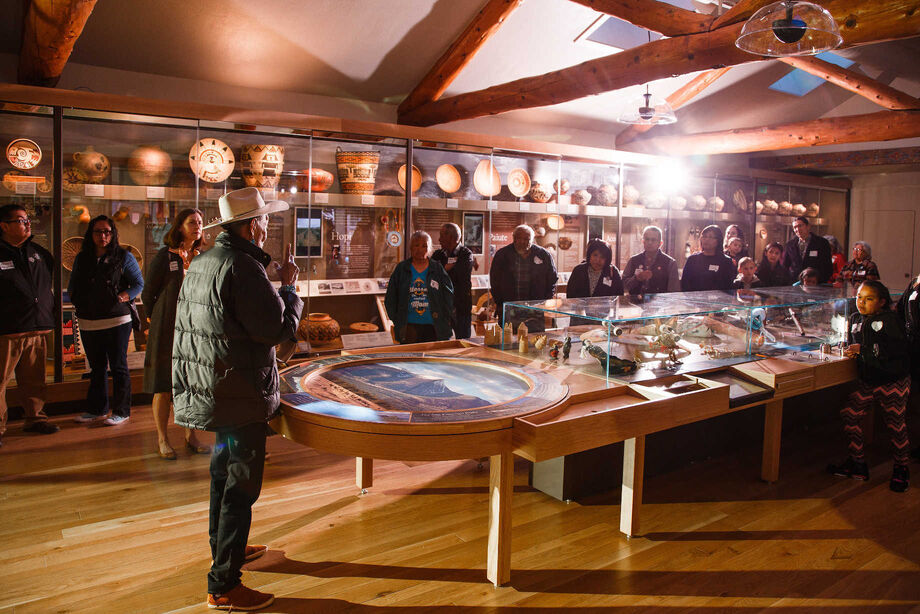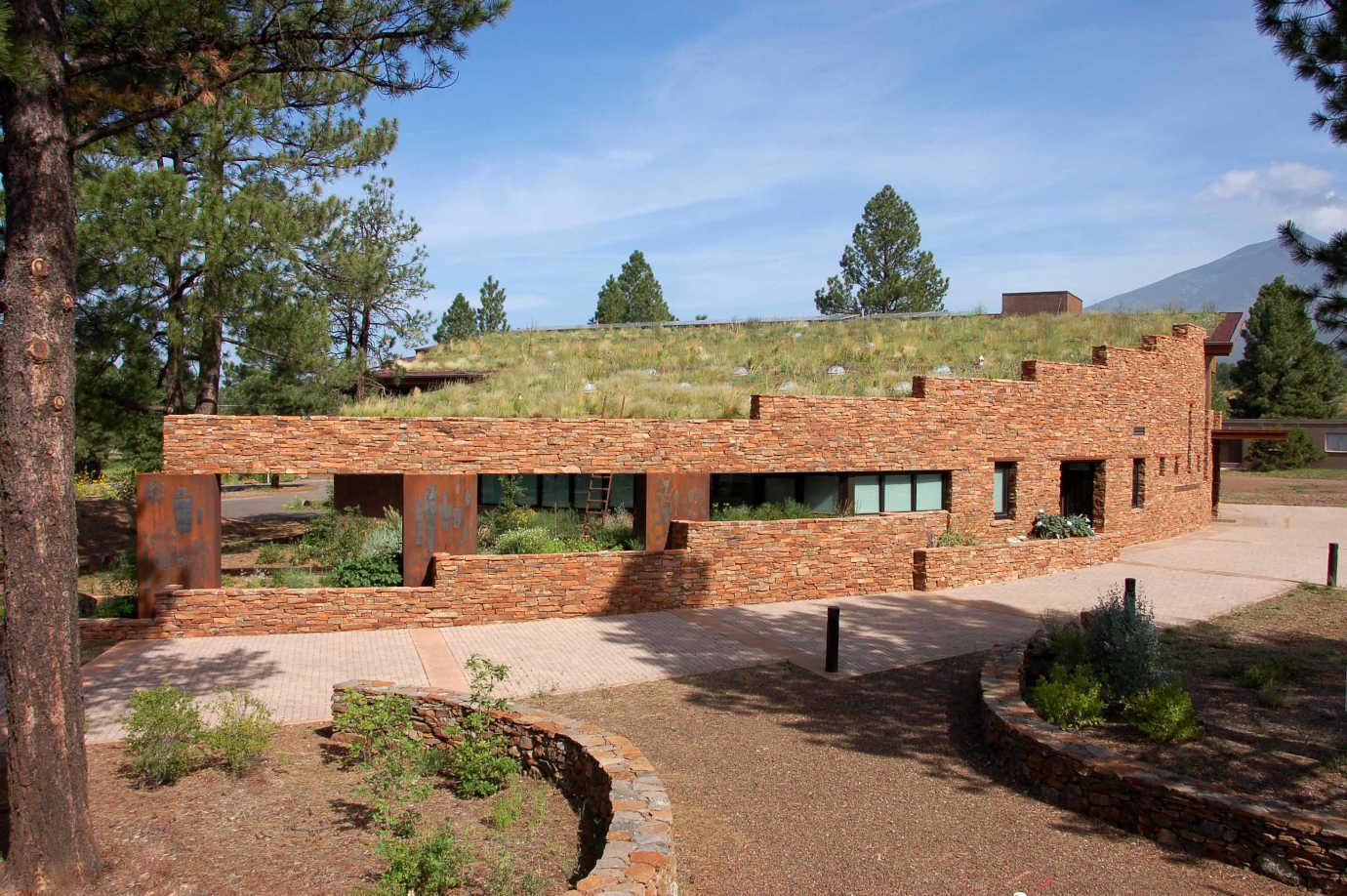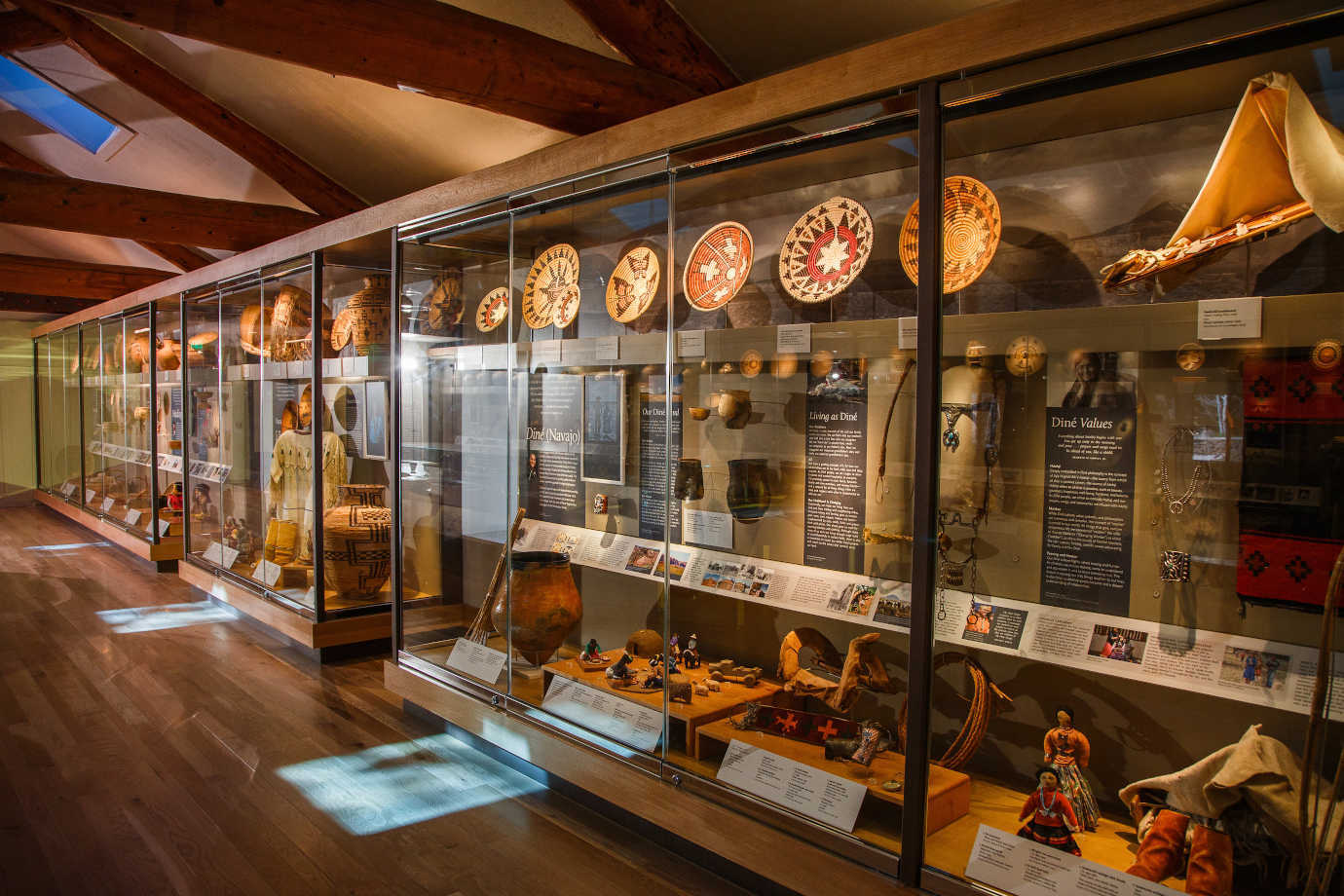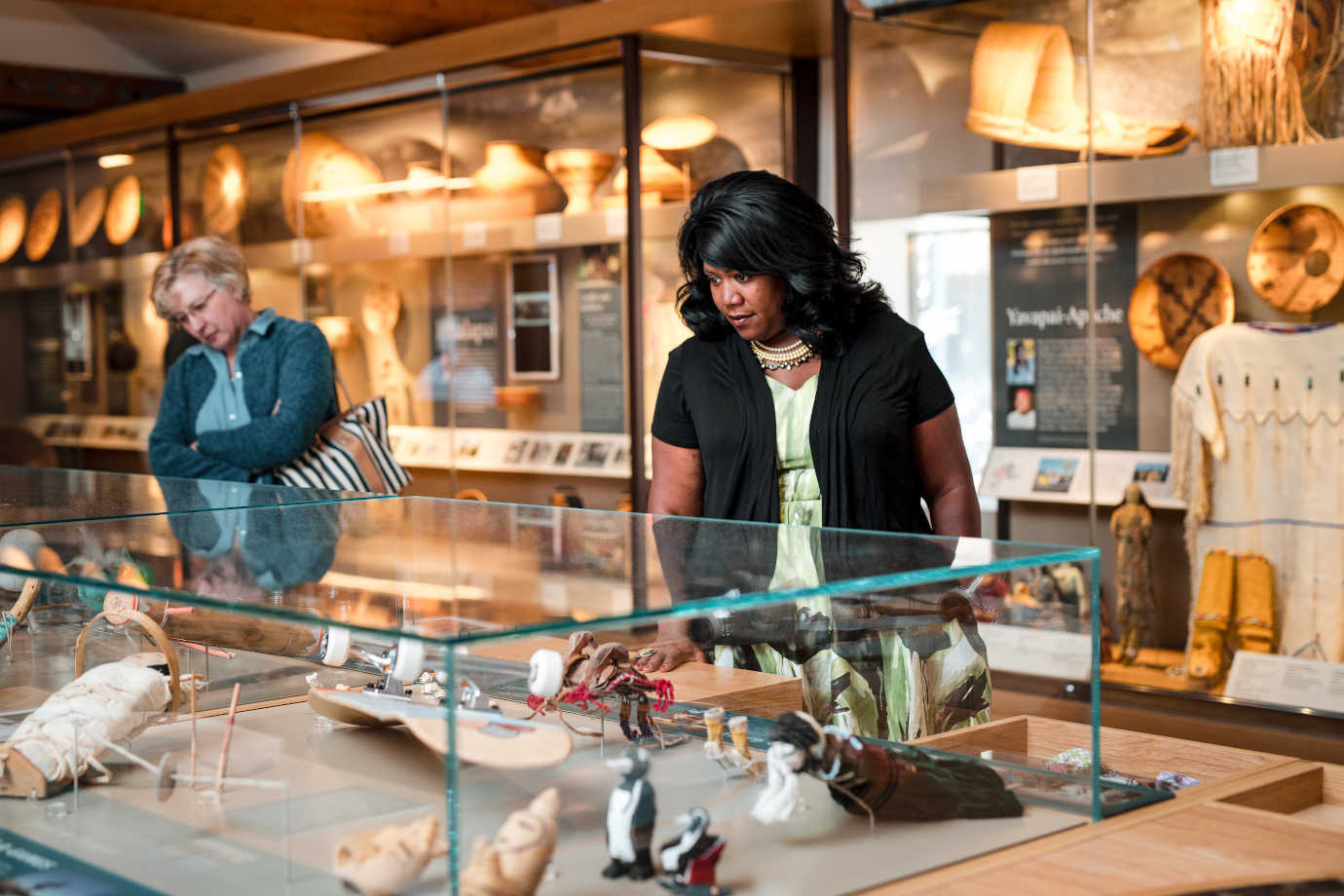
Native Peoples of the Colorado Plateau gallery’s opening weekend included a gathering of people from all ten tribes represented. Image courtesy of the Northern Arizona Museum.
Founded in 1928, the Museum of Northern Arizona collects, preserves, and interprets the natural and cultural history of the Colorado Plateau. In addition to serving the local, rural community, the museum attracts many visitors traveling through the region on their way to and from the Grand Canyon. As a collecting institution, the Museum of Northern Arizona plays an important role in keeping local collections local, as it holds many items unearthed in the state. And the Museum of Northern Arizona has a long history of NEH funding. While early grants helped it create an internship program and supported permanent anthropology exhibits, more recent grants have helped the museum preserve its cultural collections and create an updated and more welcoming exhibition space.


